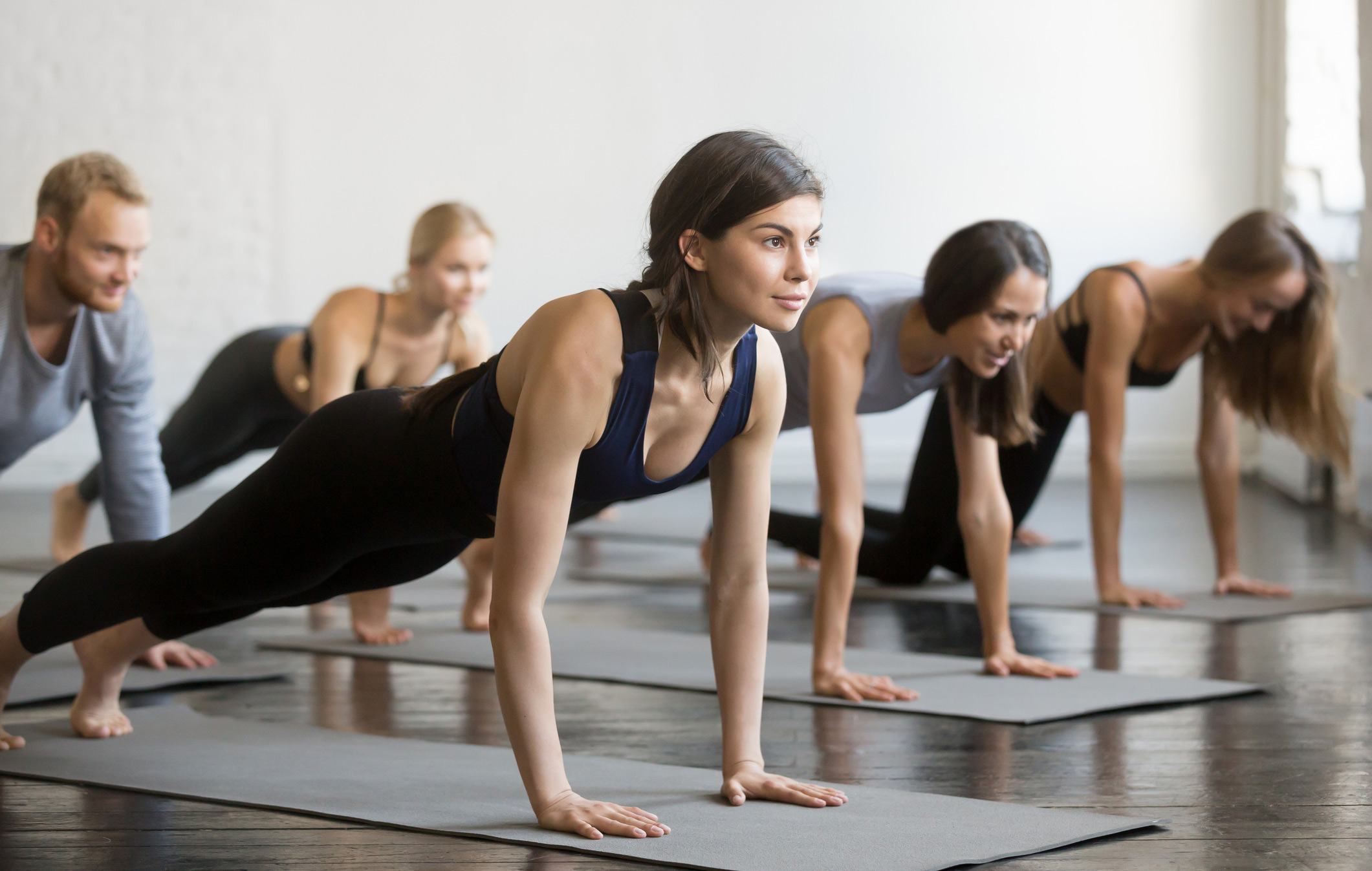Trying something new might just inspire you to keep on moving all year long. Here are this year’s top three fitness trends.
It seems like with every new year, along with wanting to spend less and eat healthier, most of us have a desire to get in better shape. But maybe the idea of going to the already crowded gym or taking the same old class bores you to tears. If you are looking for some fresh ways to inspire your new year’s fitness goals, try one of these three hot fitness trends for a take on your workout routine that is sure to get you excited about committing to being fit.
Ballet-inspired classes
Pliés and relevés have been used by ballerinas for years to tighten, tone and strengthen the body. Workouts that incorporate those moves have become a craze in the fitness industry in the last few years, but the concepts are likely here to stay, not just a fad. Barre studios, fitness centers and even web-based videos now offer a variety of ballet-inspired classes that include floor and barre work, resistance bands and small weighted balls. The focus is mainly on using proper form, engaging the core muscles and improving stability.
Try this trendy workout if you are looking to strengthen muscles in the abdominals, hips and low back and even to improve posture. Better balance and core strength throughout your entire mid-section are also benefits you can expect to achieve. However, keep in mind: Because it does not provide a cardiovascular workout, it is not the best choice for individuals with weight loss goals, or those focused on improving a chronic condition such as heart disease or diabetes. Although, a ballet barre-oriented workout can be a great option for people with joint or low back pain, if done with proper form. As with any new exercise program, always consult a healthcare provider first.
Bodyweight training
Each year the American College of Sports Medicine asks fitness professionals from all over the world to identify the fitness trends for the upcoming year. Close to the top of the list for several years in a row, including for 2020, is bodyweight training. This concept essentially uses a person’s own body weight as resistance rather than machines or free weights. With little to no equipment needed, it is an inexpensive, yet effective fitness option that can be done virtually anywhere. It’s a great option for home-based workouts, or for keeping fit while traveling, so it’s not surprising that it is becoming so popular. Pushups, planks, lunges and triceps dips are all examples of bodyweight-assisted training exercises that are appropriate for most healthy people. A fitness professional can help you identify a series of beginner-friendly and more advanced versions of bodyweight exercises for all major muscles.
Functional Fitness
According to the Centers for Disease Control and Prevention, 61 percent of adults over 65 years old have limitations in their ability to do something we all take for granted, such as pick something up off of the floor or reach for a dish in the kitchen cabinet. Functional fitness is about building strength and range of motion. It makes it easier to perform real-life activities: swinging a golf club, lifting a suitcase into an airplane overhead bin or reaching into a car to get a baby out of a car seat.
Most exercise focuses on an independent muscle, but functional fitness is about training an entire group of muscles that work together. Think about the variety of muscles you engage when you vacuum, pick up a bag of potting soil or get up out of a low chair. An example of a functional fitness exercise is squats, which engages the glutes, hips, quadriceps and hamstring muscles while also promoting balance and stability.
A beginner-friendly option would be to squat while holding on to a chair, and an intermediate version would be to squat while balancing on one leg. For an advanced maneuver, one could add weight or a prop to make the squat less balanced. Stability balls and wobble boards are great props for a more advanced functional fitness practice, providing balance while you hold or lift the weight and engage core muscles. Other examples of exercises that strengthen muscle groups that mimic real-life activities include wood chops, rows and hops. Based on your fitness level, a fitness professional can create safe and effective techniques to incorporate a series of functional exercises into your routine.
It’s a new year, so why not consider shaking up your fitness routine by adding in a few of the newest fitness trends in the workout world? Each has beginner-friendly modifications, so most people can incorporate many of the principles safely. So take a step. Set a few small, realistic goals to try something new that might inspire you to keep moving all year long.

